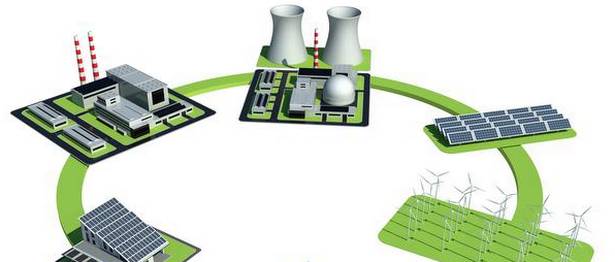As India sets out to meet its ambitious target of 450-GW renewables by 2030, it is an opportunity to transform the networks into smarter and greener grids. However, there are also challenges, including the need for huge resources.
Three things are happening simultaneously. The energy generation mix is changing, thanks to renewable energy coming in; consumers are turning into prosumers as they are both consuming and producing electricity; and decentralised generation of energy is becoming popular. Together, they make the grid even more significant as it becomes the centre of both generation and consumption and is, hence, undergoing a complex transition. It needs to address bidirectional flows and multiple feeding points.
This makes the need for green grids (which have a high proportion of clean energy sources) and green energy corridors (which serve as evacuation networks to carry higher capacity of renewable energy) that much more important. Add to this the new forms of load that will tax the grid, such as the charging of a large number of electric vehicles, operating data centres, and even the Indian Railways, which is setting a mission of net carbon zero by 2023.
“These rapid changes have resulted in tremendous challenges and opportunities, with the grids needing to be resilient,” says N Venu, Managing Director and CEO, India and South Asia, Hitachi ABB Power Grids. He explains that the grids are now becoming bigger by the day and need astute handling as the growing share of renewable energy is susceptible to interruptions because “we don’t know when the sun shines and when the wind blows”.
Quoting the recent International Energy Agency report that India may need to add a power system the size of the European Union to meet future requirements, Venu says, “We need to expand the current transmission and transformation capacity manifold. The grids must be robust enough to withstand these rapid changes and handle the large entry of renewables, growth of EVs and green data centres.”
According to the Central Electricity Authority’s annual report for 2019-20, India needs $281 billion to build its transmission systems for evacuating renewables. While the pandemic delayed awarding projects to companies, enhanced activity is likely in the coming months. There is also a need for innovative energy solutions and digital platforms for the entire power ecosystem — generation, transmission, distribution and consumption. Importantly, sustainability must be plugged into the system.
Green corridors
Among the various initiatives for renewable energy transmission was the government’s Green Energy Corridor around seven years ago, which was adopted by several states. Several projects were tendered, including some to evacuate power from solar parks, but not much has happened on the ground after December 2019. Six competitive bidding packages have been awarded so far, and more are expected later this fiscal. At the state level, utilities are looking forward to green energy corridors that connect their solar parks, wind parks or hybrid farms.
Talking about his company and the sector in general, Venu says that while Covid has disrupted the process, “we are cautiously optimistic that we can reach our targets in time because everything is falling in place. Everybody is making sustainability a part of their strategy. We are looking to achieve our net zero goal by 2030.”
In a recent report, the Institute for Energy Economics and Financial Analysis (IEEFA) notes that the challenge of India’s growing daily peak demand does not require investment in excess baseload thermal capacity. Instead, the electricity system needs flexible and dynamic generation solutions in the form of battery storage, pumped hydro storage, peaking gas-fired capacity and flexible operation of the existing coal fleet.
“Increasing renewable energy generation, along with other flexible sources, can address the issue of peak shortages as the load profile is also changing in India, with high demand occurring during the day,” opines IEEFA’s energy economist Vibhuti Garg.
And what better way to address these needs than green grids and green energy corridors. An idea waiting to be executed.
Source: thehindubusinessline.com









